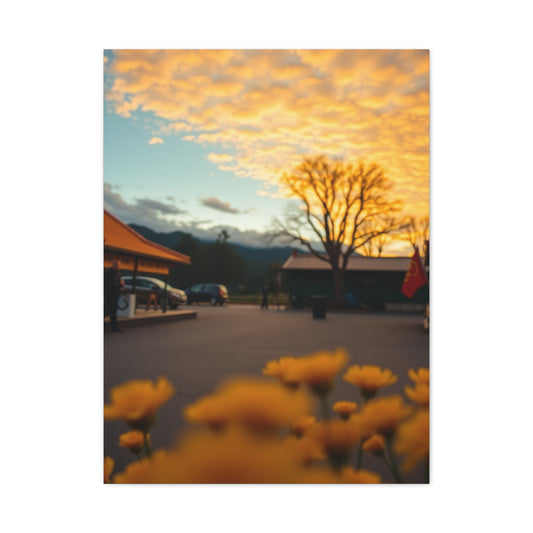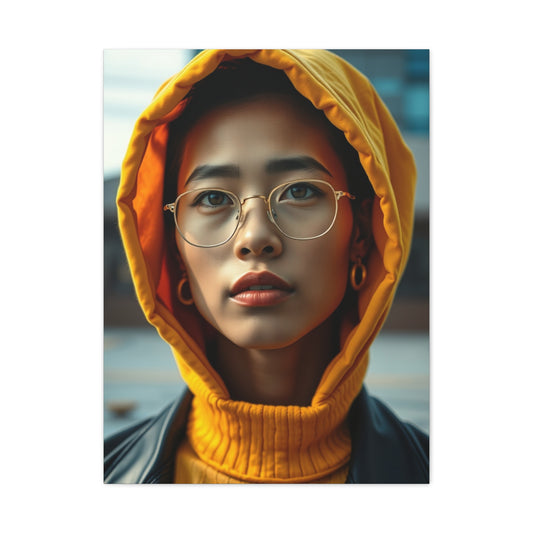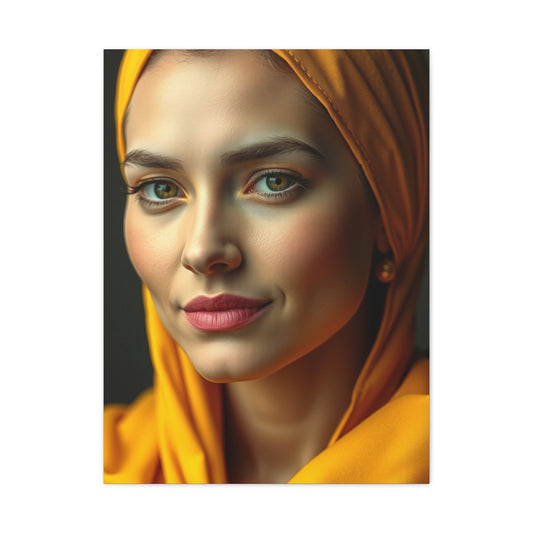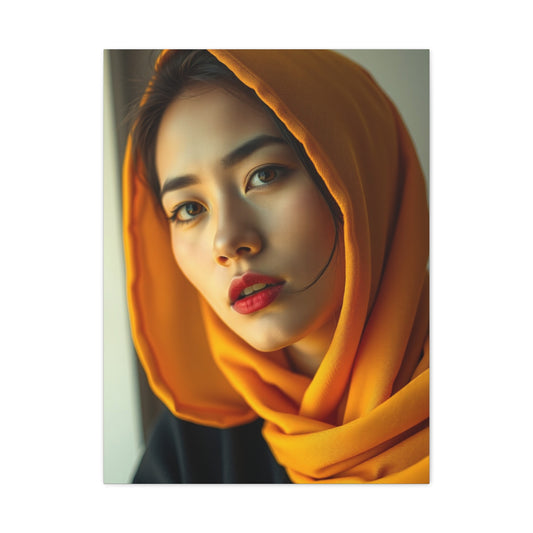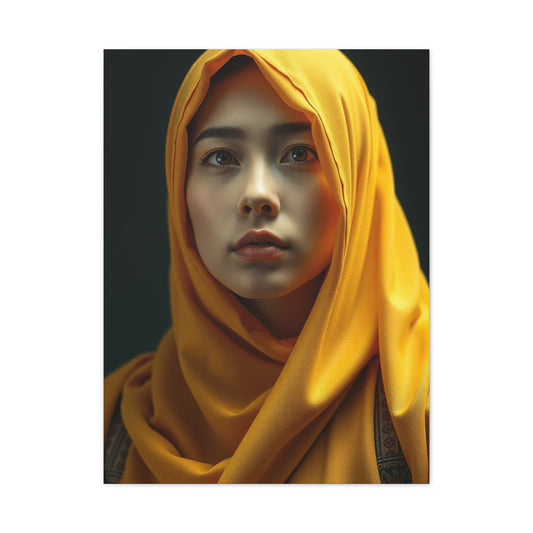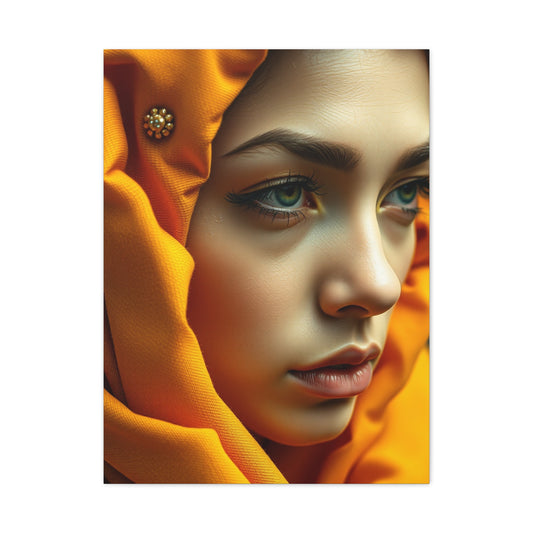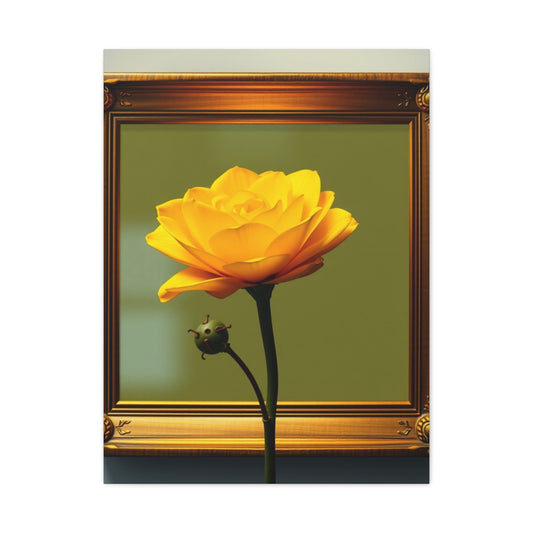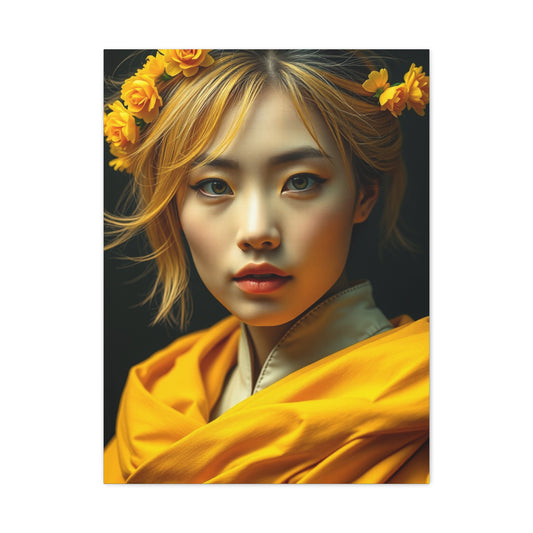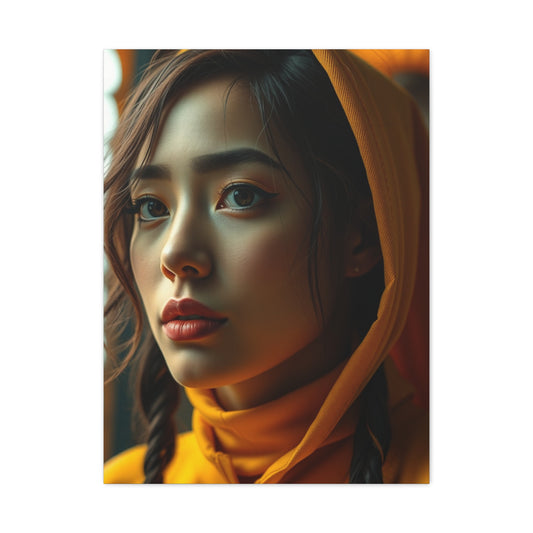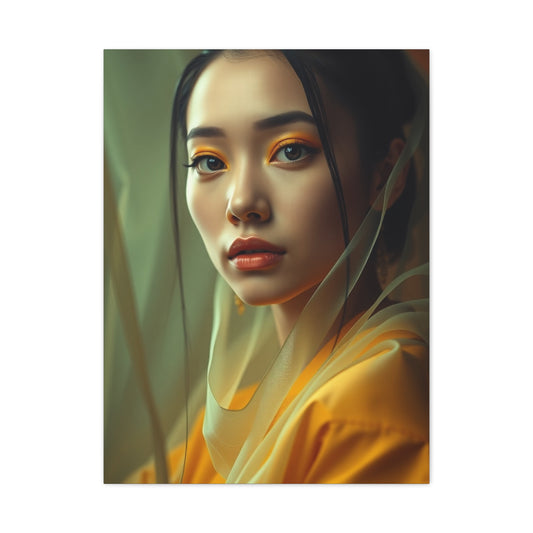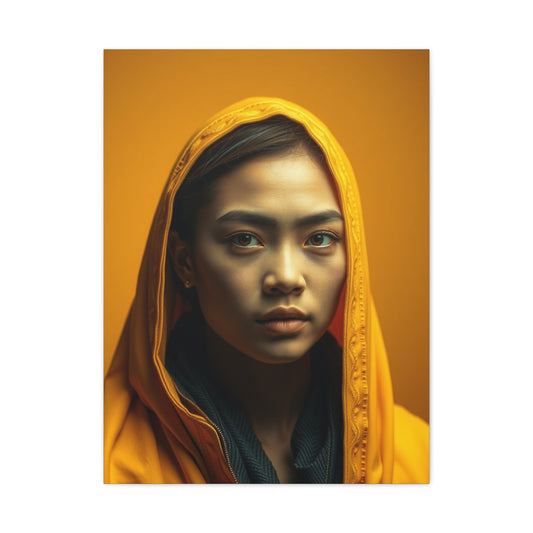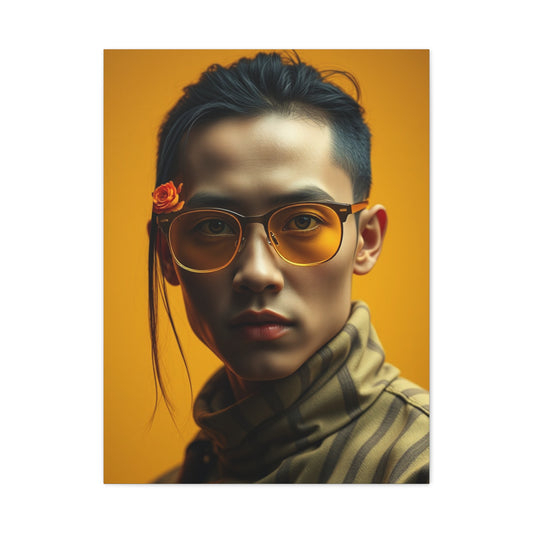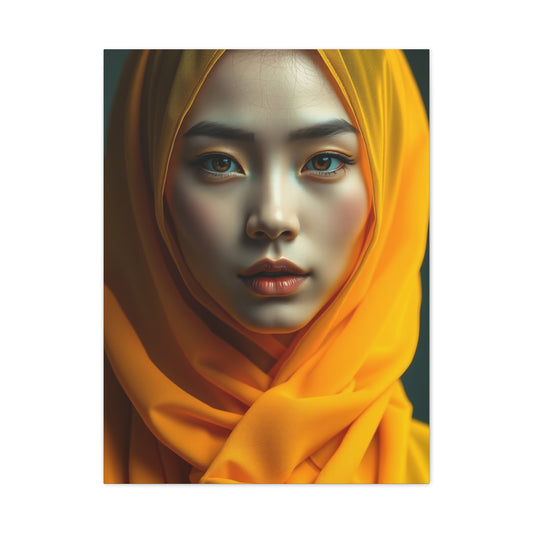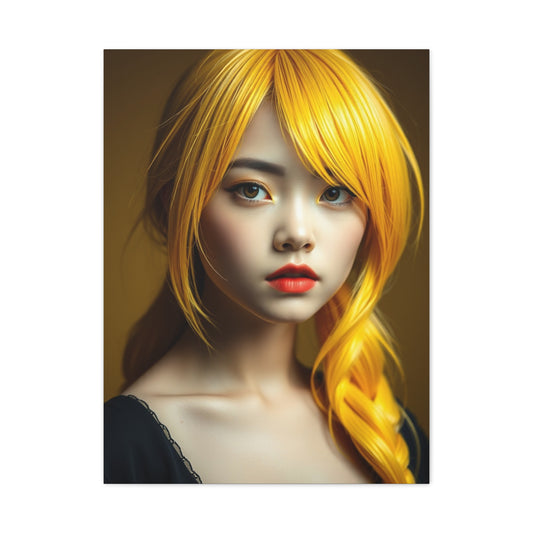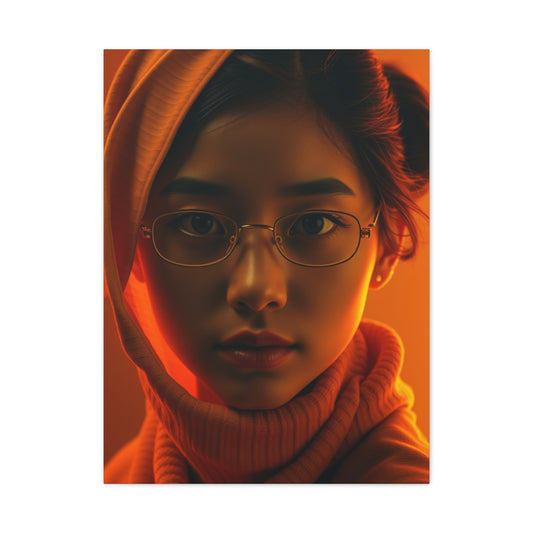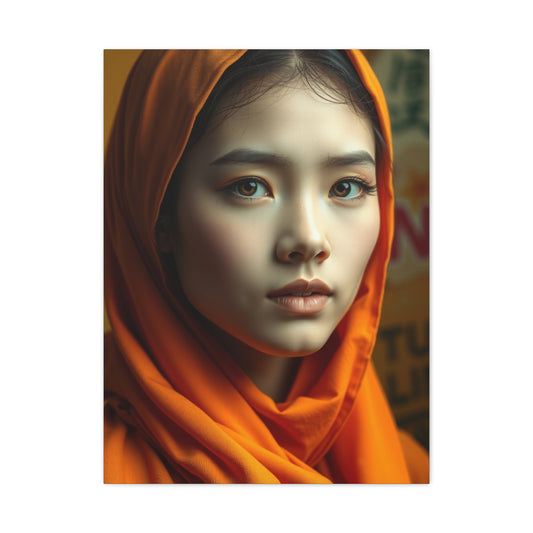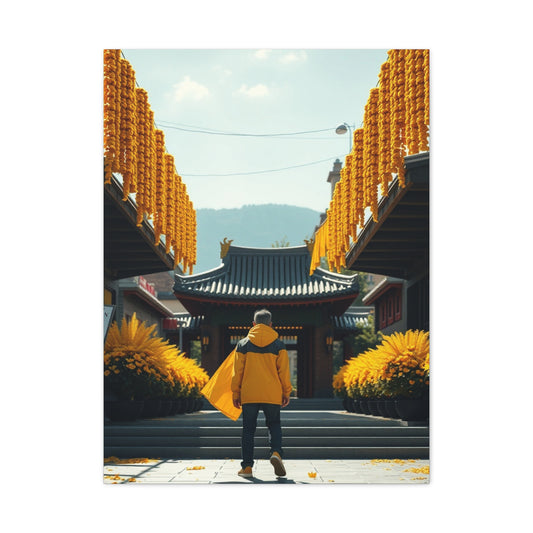Top Color Schemes for Wall Art on Yellow Walls
Decorating a bedroom is a deeply personal and creative process. One of the most significant elements that contribute to the ambiance and personality of a bedroom is wall art. Paintings, in particular, hold the power to transform a simple room into a visually captivating space. They add character, create focal points, and can even influence the mood and energy of the room. A yellow wall bedroom offers a warm, vibrant backdrop that opens up numerous possibilities for integrating paintings that complement or contrast with the wall color. Understanding how to select, place, and harmonize paintings with the existing elements of the bedroom is essential for achieving a cohesive and aesthetically pleasing interior. This article will explore the principles, techniques, and artistic considerations for choosing the right paintings for a yellow wall bedroom.
Understanding the Role of Paintings in a Bedroom
Paintings serve multiple purposes in bedroom decor. They are not merely decorative; they are an extension of the occupant’s personality, taste, and artistic sensibilities. A well-chosen painting can transform a dull bedroom into a lively, inspiring sanctuary. In bedrooms with yellow walls, paintings play an even more crucial role because yellow is a bright and attention-grabbing color. The intensity of yellow can either enhance or overpower a painting, depending on the choice of artwork, its colors, and its composition. It is essential to recognize that paintings are not standalone elements. They interact with the furniture, curtains, bed linens, and decorative accessories to create a harmonious visual narrative. The visual impact of paintings depends not only on their colors and subjects but also on their size, placement, and the frame used.
Principles of Selecting Bedroom Paintings
Selecting the right paintings for a bedroom involves a combination of artistic insight and practical considerations. Paintings in a bedroom should complement the overall interior design, harmonize with furniture, and resonate with the personal style of the occupants. A key principle is to maintain stylistic consistency. While mixing styles is possible, chaotic combinations can lead to visual dissonance, making the room feel cluttered or aesthetically inconsistent. Choosing paintings of the same theme, color palette, or artistic style ensures a cohesive appearance. Another important principle is contrast. Yellow walls are bright and energetic, so paintings that offer contrast in tone, color, or composition can stand out beautifully. Conversely, paintings with tones too similar to the wall color may appear muted or lost, reducing their visual appeal. The frame also plays an essential role in harmonizing paintings with the room. Frames should match or complement the furniture and decorative elements, ensuring that the painting feels integrated into the space rather than detached from it.
Matching Paintings with Room Size and Architecture
The size and architecture of the bedroom influence the selection and arrangement of paintings. Large paintings can dominate small rooms, creating an overpowering effect, whereas small paintings can appear lost in spacious rooms, failing to make the desired visual impact. Vertical paintings can create an illusion of height, making ceilings appear taller, while horizontal paintings can make narrow rooms feel wider. Medium-sized square paintings are often versatile, fitting well into various layouts without altering the perception of space. For bedrooms with ceilings taller than three meters, vertical compositions work exceptionally well. In contrast, rooms with standard ceiling heights may benefit from horizontal or rectangular paintings, which distribute visual weight evenly. Above the bed, the artwork should generally not exceed half the width of the bed, though modular compositions can extend to cover up to two-thirds of the wall space. These proportional considerations ensure that paintings are visually balanced within the architectural context of the room.
Color Harmony and Framing Techniques
Achieving color harmony between paintings and a yellow wall involves thoughtful consideration of tones, contrasts, and framing techniques. Paintings with colors similar to the wall can be accentuated using contrasting frames, creating a striking visual boundary. Conversely, paintings with vivid or bright colors can be softened by frames that echo the yellow wall or nearby furniture. It is essential to remember that the vibrancy of a yellow wall can suppress lighter tones in paintings, making them less noticeable. Therefore, balancing wall color and painting hues is critical to ensure the artwork remains prominent and aesthetically appealing. Color coordination should also extend to decorative accessories such as cushions, rugs, and vases, which can echo motifs or hues from the paintings to create a coherent and visually pleasing interior.
Choosing the Subject Matter of Paintings
The subject matter of paintings should align with the overall bedroom style. Classical interiors may favor landscapes, still lifes, and floral compositions in soft, natural colors. Modern interiors can embrace abstract, avant-garde, or monochrome artwork that complements minimalist decor. Country or Provence styles often highlight pastoral scenes, botanical illustrations, or natural landscapes rendered in warm, earthy tones. Teen or pop-inspired rooms can incorporate pop art, contemporary graphics, or bold, colorful compositions. Art-deco or eclectic interiors may benefit from expressionist paintings, oil on canvas, watercolor, or modular arrangements that combine multiple pieces into a cohesive visual story. The subject matter, when thoughtfully chosen, enhances the thematic consistency of the bedroom and reinforces the intended atmosphere.
Practical Tips for Arranging Bedroom Paintings
Arranging paintings involves strategic placement to maximize visual impact and maintain balance. Paintings should be positioned at eye level, generally around 150 to 160 centimeters from the floor to the center of the artwork. Above beds or furniture, paintings should have a proportional relationship with the width and height of the underlying piece. Modular arrangements, combining several smaller pieces into a larger composition, can create a dynamic focal point while maintaining visual harmony. Vertical arrangements can accentuate room height, while horizontal alignments expand the perception of width. When arranging multiple paintings, maintaining consistent spacing and alignment is essential for creating an orderly, professional look. This approach prevents visual clutter and allows each piece to be appreciated individually while contributing to the overall aesthetic.
Integrating Paintings with Interior Details
The integration of paintings with other interior details enhances cohesion and harmony. This includes coordinating with bed linens, curtains, rugs, and decorative accessories. For example, a painting featuring floral motifs can be complemented with fresh flowers or floral-patterned textiles. Similarly, geometric or abstract paintings can be echoed in pillow patterns or decorative objects. Such rhyming elements establish visual continuity and strengthen the thematic unity of the room. In yellow-walled bedrooms, this approach is particularly effective because the bright backdrop can amplify the colors and patterns in both paintings and decorative items. Careful integration ensures that the room feels intentionally designed rather than haphazardly decorated.
The Role of Texture and Medium in Bedroom Paintings
The texture and medium of paintings play an important role in how they interact with yellow walls. Watercolor paintings, with their light and airy quality, work well to soften the intensity of yellow walls and create a tranquil atmosphere. Oil paintings offer depth, richness, and vibrant color saturation, which can provide dramatic focal points. Acrylic paintings are versatile, lending themselves to retro, pop, or modern interiors with bold colors and dynamic textures. Canvas texture, brushwork, and layering techniques contribute to the painting’s visual impact and can either complement or contrast with the smoothness of the wall. Selecting the right medium ensures that the artwork harmonizes with both the wall color and the overall interior style.
Psychological Effects of Paintings in Yellow Bedrooms
Paintings in yellow bedrooms influence the emotional and psychological experience of the space. Yellow is associated with warmth, optimism, and energy, and paintings can either amplify or balance these effects. Cool-toned paintings such as blues, greens, and muted purples can calm the intensity of yellow, creating a restful atmosphere. Warm-toned paintings, including oranges, reds, or bright multicolor compositions, can energize the space and add vibrancy. The choice of subject matter also affects mood; landscapes and natural scenes promote relaxation and a connection to nature, while abstract or dynamic compositions can inspire creativity and activity. Understanding these effects allows for intentional design choices that enhance comfort, productivity, and aesthetic satisfaction.
Advanced Color Combinations for Yellow Wall Bedrooms
Choosing paintings for a yellow wall bedroom involves more than simply picking artwork that you like. It requires an understanding of color theory and how different hues interact with yellow to create balance, harmony, or dynamic contrast. Yellow is a warm, vibrant, and highly visible color. It can dominate a space if not balanced properly, so selecting paintings with complementary or contrasting colors is essential. Cool tones such as blue, teal, and green work particularly well because they provide a soothing counterbalance to yellow's brightness. Blue, being opposite yellow on the color wheel, creates a natural contrast that makes the painting stand out. Dark navy or muted teal tones can introduce depth and sophistication, while lighter aquamarine or soft sky blue adds a sense of airiness and calm. Similarly, earthy greens like olive, sage, or moss create a natural, grounded atmosphere that blends beautifully with yellow walls while maintaining visual interest.
Warm-toned paintings can be used to intensify the energy of a yellow bedroom. Shades of orange, coral, and red harmonize with yellow and create a lively, cheerful environment. These combinations work best in spaces where brightness and energy are desired, such as creative studios or rooms for morning routines. Careful moderation is essential, as too many warm colors can overwhelm the room. Neutral tones such as gray, beige, taupe, and white provide visual relief and sophistication. Gray in particular acts as a stabilizing backdrop for yellow walls, allowing the painting to shine without competing with the wall color. Black and white compositions, whether abstract or photographic, provide classic contrast and timeless elegance. Monochrome paintings can work particularly well in minimalistic or modern interiors, adding refinement and focus.
Harmonizing Painting Styles with Bedroom Themes
Beyond color, the style of the painting is critical in achieving a cohesive bedroom aesthetic. Each interior design style has visual cues, motifs, and textures that paintings can either reinforce or contrast to produce a desired effect. Classic or traditional bedrooms favor paintings with pastoral landscapes, still lifes, florals, or historical scenes. Soft watercolors and gentle brushwork enhance the elegance and tranquility of such spaces. Provence or country-style bedrooms are enriched with paintings depicting rural life, fields, flowers, and natural scenery. These often employ earthy tones, muted pastels, and delicate details that harmonize with wooden furniture, soft linens, and rustic accents. Modern and contemporary interiors embrace abstraction, minimalism, and bold compositions. Abstract paintings with geometric forms, fluid brushstrokes, or vibrant splashes of color can create dramatic focal points and lend an artistic edge to a yellow wall bedroom. Modular or triptych paintings are particularly effective in contemporary spaces, as they provide structure while maintaining flexibility in layout.
Pop art is ideal for vibrant, youthful bedrooms or creative spaces. Bold, colorful, and playful compositions energize the room and reflect individuality. Art-deco interiors respond well to expressionist paintings, graphics, or oil works with metallic or glossy finishes. These pieces enhance the glamour and sophistication of the space. Avant-garde and experimental designs are suited for lofts, high-tech rooms, or minimalist interiors, where unexpected compositions, unusual textures, or monochromatic palettes can create intrigue and visual focus. Understanding the style of the bedroom and selecting paintings that complement or purposefully contrast with the theme ensures that the artwork contributes to a harmonious visual narrative rather than feeling out of place.
Placement and Spatial Perception
Placement of paintings is as crucial as the selection itself. Paintings influence the perception of space, light, and proportion in a bedroom. Proper positioning can make small rooms feel larger, ceilings appear higher, or horizontal spaces wider. Eye-level placement is recommended for general viewing, typically around 150 to 160 centimeters from the floor to the center of the artwork. Above beds or major furniture pieces, paintings should relate proportionally to the underlying structure. A painting or collection of paintings that is too small will appear lost, while one that is too large may overwhelm and dominate the space.
Vertical paintings can enhance ceiling height, creating an illusion of spaciousness and grandeur. This is particularly effective in rooms with lower ceilings, as vertical compositions draw the eye upward. Conversely, horizontal paintings expand the perception of width, making narrow bedrooms feel more open and balanced. Square or medium-sized paintings offer versatility, fitting comfortably into a variety of layouts without affecting spatial perception dramatically. In larger bedrooms, large canvases or grouped compositions above the bed can create a focal point and visually anchor the room. In smaller rooms, a single moderately sized painting or a series of small images arranged cohesively can provide visual interest without overcrowding the wall. Modular arrangements allow for creativity in spacing and alignment, enabling a flexible approach that adapts to room dimensions and furniture layout.
Frame Selection and Integration
Frames play a critical role in integrating paintings with yellow wall bedrooms. They serve as visual bridges between the artwork and surrounding interior elements. The frame can either contrast with the wall to highlight the painting or match the wall and nearby furniture to create a more subdued, harmonious appearance. Dark frames, such as black, espresso, or deep brown, offer strong contrast and draw attention to the painting, especially when the artwork contains lighter or more muted tones. Lighter frames, such as natural wood, white, or gold, provide elegance and softness, blending smoothly with yellow walls and bright furniture.
Beyond color, frame style and texture contribute to overall aesthetic cohesion. Ornate, classical frames complement traditional or vintage interiors, while minimalist frames enhance modern, high-tech, or Scandinavian designs. Acrylic or metal frames suit contemporary and industrial settings, providing sleekness and structural simplicity. The choice of frame should always consider the surrounding decor, furniture finish, and the painting's colors to achieve a cohesive visual result. Frames also protect artwork and add a sense of formality and refinement, ensuring that paintings do not appear disconnected from the interior context.
Enhancing Mood Through Painting Selection
Paintings contribute significantly to the psychological and emotional atmosphere of a bedroom. Yellow walls inherently radiate warmth, optimism, and energy. Paintings can either enhance or temper these effects depending on their color palette, composition, and subject matter. Cool-toned paintings, such as landscapes in blues and greens, create a soothing counterbalance to the energetic yellow, producing a tranquil, restful environment. Warm-toned paintings amplify energy and create a cheerful, stimulating space that encourages activity and conversation. Neutral or monochromatic paintings foster calmness, focus, and introspection.
The subject matter of paintings also influences mood. Landscapes, seascapes, and pastoral scenes provide a sense of connection to nature, promoting relaxation and mental clarity. Florals and botanical imagery can add freshness, vitality, and a soft decorative touch. Abstract paintings introduce dynamism, movement, and energy, enhancing creativity and personal expression. In bedrooms designed for rest and sleep, calming colors and serene subject matter are advisable. For creative or multifunctional spaces, bold colors and dynamic compositions may be more appropriate.
Techniques to Balance Yellow Walls
Decorating a yellow wall bedroom requires careful consideration of balance. Bright yellow walls can overpower subtle artwork if not paired thoughtfully. One technique is to introduce complementary color combinations that enhance the artwork’s visibility while maintaining harmony. Contrasting colors, such as purples, navy blues, or deep greens, stand out against yellow, making the painting a focal point. Another technique involves using neutral tones within the painting to balance the wall's vibrancy. For example, paintings with white, beige, gray, or muted tones can soften the intensity of yellow, ensuring that the room feels balanced rather than overstimulating. Layering, texture, and depth in paintings also contribute to a visual equilibrium, drawing attention to the artwork while complementing the background color.
Lighting plays a vital role in enhancing paintings on yellow walls. Natural light can amplify the brightness of the yellow wall and influence the perception of colors in the painting. Soft ambient lighting, wall-mounted picture lights, or strategically placed lamps can accentuate the painting’s colors and textures, ensuring that the artwork remains the focal point without competing with wall color. Proper lighting creates contrast, highlights details, and adds depth to the visual composition.
Matching Paintings with Interior Accessories
Coordinating paintings with bedroom accessories strengthens cohesion and visual appeal. Decorative elements such as cushions, rugs, vases, and curtains can echo motifs, colors, or patterns from the artwork. For instance, a painting featuring floral designs can be complemented with fresh flowers, patterned pillows, or matching bedspreads. Geometric or abstract paintings can be paired with similarly patterned textiles or decorative objects, reinforcing the artistic theme. Such rhyming techniques create a unified visual narrative and make the bedroom feel intentional, polished, and thoughtfully designed. In yellow-walled bedrooms, these strategies are particularly effective because the vibrant backdrop amplifies both paintings and accessories, allowing them to harmonize or contrast as desired.
The Role of Texture and Medium
Paintings vary widely in medium and texture, which affects their interaction with yellow walls. Watercolor paintings offer delicacy, lightness, and transparency, which soften the visual impact of yellow walls and create a tranquil ambiance. Oil paintings provide rich colors, depth, and a dramatic presence, making them ideal for focal points or large compositions. Acrylic paintings are versatile, allowing for vivid, dynamic, and bold imagery that complements contemporary or pop-art-inspired interiors. Canvas texture, brushwork, and layering influence how the painting interacts with the wall and other decor, creating subtle visual depth or pronounced dimensionality. Selecting the appropriate medium ensures that the painting integrates seamlessly with the yellow backdrop and the overall bedroom style.
Practical Strategies for Selecting Paintings
When choosing paintings for a yellow wall bedroom, it is essential to combine aesthetic vision with practical considerations. While color theory and style alignment provide a conceptual framework, applying these principles in real-life scenarios requires attention to room dimensions, lighting, furniture arrangement, and the desired mood. Practical strategies begin with assessing the bedroom’s architectural features. The height of ceilings, placement of windows, and available wall space dictate which paintings will be visually appropriate. Large walls may accommodate oversized canvases or grouped arrangements, while smaller walls benefit from medium or small-sized paintings arranged in a cohesive composition. The goal is to create visual balance, ensuring that the paintings neither dominate nor disappear against the yellow backdrop.
Another practical consideration is the selection of paintings based on function and interaction with bedroom furniture. For example, above a bed, paintings should generally occupy no more than half to two-thirds of the width of the bed. This proportional relationship maintains harmony and prevents the artwork from overwhelming the headboard or the overall furniture arrangement. For nightstands, dressers, or seating areas, smaller paintings or vertical compositions can introduce visual interest without cluttering the space. Modular arrangements offer flexibility, allowing multiple smaller paintings to form a larger cohesive design that adapts to the dimensions of the wall and furniture layout.
Choosing Paintings for Different Yellow Shades
Yellow walls come in a wide spectrum of shades, from pale buttery hues to deep, mustard tones. Each shade interacts differently with paintings, influencing contrast, visibility, and overall harmony. Light yellow walls, such as lemon or pastel shades, offer an airy, cheerful backdrop. Soft, muted paintings in cool tones or neutrals can maintain a tranquil environment, while bold, saturated colors create a striking contrast and focal point. Medium yellow walls, including sunflower or golden tones, are warmer and more intense. Paintings in deep blues, purples, or contrasting greens create visual tension and highlight the artwork. Warm-toned paintings, including oranges and reds, harmonize with medium yellows to generate vibrancy and energy. Dark yellow walls, such as mustard or ochre, provide a rich and dramatic backdrop. In these cases, paintings with lighter tones, white highlights, or metallic accents can prevent visual heaviness while enhancing the luxurious feel of the space. Understanding the specific shade of yellow allows for intentional selection of paintings that either complement or contrast effectively.
Arranging Paintings in Yellow Wall Bedrooms
The arrangement of paintings is critical to achieving visual harmony. Above the bed, a single large canvas can serve as a statement piece, establishing the focal point of the room. For smaller paintings, creating a gallery-style wall can provide interest and personality while maintaining cohesion. The spacing between paintings should be consistent, with enough room for each piece to be appreciated individually while contributing to the overall composition. Vertical arrangements elongate walls and accentuate height, while horizontal layouts expand the sense of width. Modular compositions, where multiple panels form a unified image, are particularly effective in modern, contemporary, or eclectic bedrooms.
In addition to placement above the bed, consider locations around furniture, windows, and open spaces. Art can frame mirrors, accentuate architectural details, or balance asymmetrical room layouts. For corner areas, tall vertical paintings can fill space without crowding, while horizontal pieces can unify long, narrow walls. Symmetry is often desirable in traditional or classical interiors, where evenly spaced paintings on either side of a central point create a sense of order and elegance. Asymmetrical arrangements suit contemporary or eclectic styles, providing dynamism and energy while highlighting artistic creativity.
Enhancing Yellow Wall Bedrooms with Thematic Coordination
The thematic content of paintings contributes significantly to the bedroom’s atmosphere and cohesion. Floral paintings work well in romantic, country, or Provence-inspired bedrooms, introducing softness, natural beauty, and visual freshness. Landscapes, seascapes, and pastoral scenes evoke a sense of calm, serenity, and connection to nature, making them suitable for restful spaces. Abstract and geometric paintings suit modern, minimalist, or high-tech interiors, where bold lines, shapes, and colors create dynamic visual impact. Pop art, with its vibrant colors and playful motifs, is ideal for youth-oriented or creative spaces. Matching the thematic content of paintings with bedroom decor ensures a cohesive design narrative that enhances the personality of the room.
In yellow-walled bedrooms, thematic coordination also involves aligning the painting’s mood with the emotional effect of yellow. Cool-toned paintings with serene landscapes or abstract forms balance yellow’s energy, promoting relaxation. Warm, energetic paintings reinforce the cheerful and vibrant atmosphere of yellow walls, ideal for creative spaces or rooms intended to inspire activity and positivity. Incorporating seasonal motifs, cultural references, or personal interests into paintings adds layers of meaning and individuality, making the bedroom feel curated and thoughtfully designed.
Lighting and Its Impact on Art in Yellow Bedrooms
Lighting significantly influences how paintings interact with yellow walls. Natural light enhances color vibrancy but can also affect perception of contrast and visibility. Morning and afternoon sunlight alters the appearance of yellow walls, and paintings may appear warmer or cooler depending on the light angle and intensity. Soft, ambient lighting helps to evenly illuminate paintings without creating glare, particularly for delicate watercolors or highly reflective surfaces. Spotlights, track lighting, or wall-mounted picture lights can highlight artwork, accentuating colors and textures while drawing attention to focal points.
The position of artificial lighting should consider the interplay of shadows, wall texture, and painting medium. Oil paintings often benefit from diffused light that reveals depth and richness, while watercolor paintings excel under soft, indirect lighting that preserves transparency and delicacy. LED lighting with adjustable color temperature allows for precise control over the ambiance, ensuring that paintings are viewed in their best possible light. Proper lighting enhances contrast between the painting and the yellow wall, prevents visual fatigue, and contributes to a cohesive and inviting bedroom atmosphere.
Integrating Paintings with Bedroom Accessories
Coordination between paintings and bedroom accessories strengthens visual harmony and design consistency. Decorative elements such as pillows, rugs, curtains, vases, and lamps can echo colors, motifs, or textures found in paintings. For example, a painting featuring botanical motifs can be complemented by matching plants, floral textiles, or decorative objects. Geometric or abstract paintings can be paired with patterned rugs, cushions, or lighting fixtures to reinforce artistic themes. This approach, often referred to as rhyming in interior design, creates continuity and ensures that the bedroom appears intentionally curated rather than arbitrarily decorated.
In yellow-walled bedrooms, accessory coordination is particularly effective. Yellow acts as a vibrant backdrop, amplifying both the paintings and the surrounding decor. Harmonizing colors in small accessories with the painting’s palette allows for subtle reinforcement of the theme, while contrasting accessories provide visual tension and interest. Proper integration of paintings and accessories ensures that the room feels balanced, cohesive, and visually appealing.
Exploring Media and Textures
The medium and texture of paintings affect their interaction with the yellow walls and the room’s overall aesthetic. Watercolor paintings are light and transparent, softening the intensity of yellow and creating an airy, delicate atmosphere. Oil paintings, with their rich, saturated colors and layered textures, offer depth and drama, making them ideal for focal points. Acrylic paintings provide versatility, allowing for bold, dynamic, and colorful expressions that complement modern or contemporary interiors.
Canvas texture, brushstroke technique, and layering methods contribute to visual interest. A heavily textured painting on a smooth yellow wall introduces dimensionality, creating a tactile contrast that draws the eye. Smooth, refined paintings harmonize with sleek furniture and minimalistic designs. Metallic or glossy finishes in paintings can enhance light reflection, adding shimmer and vibrancy to the bedroom. Selecting an appropriate medium ensures that the artwork integrates seamlessly with the wall color and room style, enhancing both aesthetic appeal and overall design cohesion.
Using Color Theory to Guide Painting Selection
Color theory provides a framework for selecting paintings that harmonize or contrast effectively with yellow walls. Complementary colors, such as purples or violets, create a strong visual contrast that makes paintings pop. Analogous colors, including oranges and greens, produce harmonious transitions that enhance warmth and cohesion. Neutral colors, such as grays, whites, and beiges, offer balance and sophistication, preventing the room from feeling overwhelming.
Understanding color saturation, value, and intensity is crucial. Bright, high-contrast paintings can dominate the room, while muted or pastel tones create subtle harmony. Combining multiple paintings with varying intensities can add depth, create focal points, and maintain visual interest. Strategic application of color theory ensures that the bedroom’s yellow walls interact seamlessly with the artwork, enhancing overall ambiance and aesthetic quality.
Advanced Techniques for Highlighting Paintings on Yellow Walls
Highlighting paintings on a yellow wall bedroom requires attention to visual balance, contrast, and integration with the room’s overall decor. Yellow walls are naturally vibrant, which can either enhance or overpower the artwork depending on how it is displayed. To make paintings stand out, consider the use of complementary colors, layered textures, and strategic lighting. Complementary tones, such as purples, deep blues, or muted violets, create striking visual contrasts, emphasizing the painting’s details and making it the focal point of the room. Paintings with multiple shades or gradient compositions can add depth, capturing attention while blending harmoniously with the surrounding yellow.
Layering is another effective technique. Placing paintings within a collection of smaller pieces, mirrors, or decorative objects creates a dynamic, multidimensional arrangement. This approach prevents a single piece from feeling isolated and allows the room to develop a coherent visual narrative. It is important to maintain proportion and spacing so that each element is appreciated individually while contributing to the overall composition. Frames can be used creatively to enhance emphasis. A contrasting frame draws the eye to the artwork, while a frame matching the wall or furniture tones softens the visual impact and creates a unified aesthetic.
Incorporating Modular and Multi-Panel Art
Modular art and multi-panel compositions offer versatile options for decorating yellow wall bedrooms. Triptychs, quadriptychs, and other modular designs allow artists and decorators to spread a single theme across multiple panels, producing a larger visual impact without overwhelming the space. These compositions are particularly effective above beds, behind seating areas, or along expansive walls. The alignment of panels should be precise, with consistent spacing to maintain harmony and cohesion.
Modular art also enables flexibility in arrangement. Panels can be staggered vertically or horizontally, depending on room dimensions and furniture layout. This flexibility is valuable in both small and large bedrooms, as it allows for creative expression while maintaining proportionality. Color and theme continuity across panels ensures that the modular composition reads as a single cohesive work, enhancing visual appeal. In yellow wall bedrooms, modular paintings featuring cool tones, neutrals, or complementary colors can balance the intensity of the wall, making the art stand out without clashing.
Integrating Personal Touches and Custom Art
Personalization is key to creating a bedroom that feels intimate and reflective of the occupant’s taste. Custom paintings, commissioned artwork, or even framed personal photographs can be incorporated to add a unique and meaningful dimension to the decor. Yellow walls provide a vibrant backdrop that enhances personal artworks, making them more visually prominent. When selecting custom art, consider scale, color harmony, and thematic alignment with the existing room design.
Personalized touches can also be thematic. For instance, if the room features botanical elements in decor and textiles, custom floral paintings or nature-inspired artworks reinforce cohesion. Travel-inspired images, abstract interpretations of personal experiences, or artworks reflecting hobbies can create a bedroom environment that is both stylish and emotionally resonant. Balancing the vibrancy of yellow walls with subdued tones, neutral frames, or contrasting accessories ensures that personal artwork remains prominent without overwhelming the room.
Combining Paintings with Textiles and Soft Furnishings
Textiles and soft furnishings provide a unique opportunity to reinforce or complement paintings in yellow wall bedrooms. Bedding, cushions, throws, and rugs can echo colors, patterns, or motifs found in the artwork, creating a cohesive and layered design. For example, a painting with botanical themes can be paired with floral or leafy textiles, enhancing visual continuity. Similarly, geometric or abstract paintings can be complemented by patterned rugs or cushions to reinforce contemporary or modern aesthetics.
This approach enhances the immersive quality of the bedroom, ensuring that the artwork does not exist in isolation. Coordinating textiles with paintings also helps to balance the brightness of the yellow walls. Cool or neutral-toned fabrics can calm the vibrancy of yellow, while warm or saturated textiles amplify energy and create a lively atmosphere. Consistency in texture is another important consideration; soft fabrics with subtle sheen harmonize with watercolors, while textured throws and cushions complement oil or acrylic paintings with visible brushwork.
Selecting Paintings for Mood and Function
The intended function of the bedroom influences painting selection. For bedrooms primarily used for rest, paintings with soothing colors, serene landscapes, or minimalistic compositions create a calming environment. Shades of blue, green, or muted neutrals are particularly effective in balancing the warmth of yellow walls and promoting tranquility. For bedrooms designed as creative or multi-purpose spaces, vibrant paintings, abstract art, or bold geometric compositions introduce energy, stimulation, and inspiration.
Mood can also be influenced by subject matter and composition. Symmetrical paintings create a sense of order and stability, ideal for traditional or minimalist designs. Asymmetrical, dynamic compositions generate movement, interest, and visual tension, making them suitable for contemporary or eclectic interiors. Integrating mood, color, and subject matter ensures that paintings contribute to the overall ambiance of the bedroom, enhancing both comfort and personal expression.
Seasonal and Cultural Considerations in Painting Selection
Incorporating seasonal and cultural influences into painting selection adds variety and relevance to bedroom decor. Seasonal themes, such as spring florals, autumnal landscapes, or winter snow scenes, can reflect changes in the environment, creating a dynamic visual experience throughout the year. Cultural motifs, traditional patterns, or artworks inspired by heritage add depth and storytelling to the bedroom. Yellow walls provide a versatile backdrop for both seasonal and culturally inspired paintings, allowing them to stand out without clashing with other design elements.
Rotating artwork seasonally or incorporating culturally significant pieces allows for a dynamic interior that evolves. This approach keeps the bedroom environment fresh and engaging, maintaining interest and preventing visual monotony. It also allows for experimentation with different color palettes, subject matters, and framing styles, enhancing the flexibility of the design.
Using Scale and Proportion Creatively
Scale and proportion play a significant role in how paintings interact with yellow walls. Large paintings can dominate smaller rooms, providing a focal point but potentially overwhelming the space. Smaller paintings can be arranged in clusters or galleries to create visual interest without imposing on the room's's proportions. The scale of paintings should also relate to furniture, architectural elements, and the overall spatial layout.
Vertical paintings enhance ceiling height and draw the eye upward, creating an illusion of spaciousness. Horizontal paintings extend the perception of width, ideal for narrow rooms or long walls. Medium-sized or square paintings offer versatility and balance, adapting to a range of layouts. Proportion also affects viewer engagement; paintings that are appropriately scaled to their surroundings encourage closer observation, while disproportionately large or small artworks may feel out of place.
Combining Multiple Media and Textures
Integrating multiple painting mediums and textures adds richness and depth to yellow wall bedrooms. For instance, combining watercolor, acrylic, and oil paintings within a modular composition creates a layered, tactile experience. Smooth and textured surfaces interact with light differently, producing visual complexity that enhances the room’s atmosphere. Metallic accents, raised textures, or mixed media elements can add dimension and intrigue, particularly when strategically placed against the vibrant backdrop of yellow walls.
Careful consideration of medium and texture ensures that paintings complement rather than compete with one another. Cohesion can be achieved through color palette consistency, thematic alignment, or framing style, while visual interest is maintained through variety in medium, texture, and brushwork. This approach allows for creative freedom while preserving balance and harmony in the bedroom decor.
Incorporating Lighting and Reflective Surfaces
Lighting continues to be a critical factor in highlighting paintings. In addition to natural light, reflective surfaces such as mirrors, glass, or metallic accents can amplify illumination and enhance the perception of depth. Spotlights, track lighting, and wall-mounted fixtures can be positioned to focus on individual paintings or highlight key compositions. Soft, indirect lighting prevents glare and enhances subtle color nuances, particularly for delicate watercolors or lightly tinted pieces.
Reflective surfaces can also interact with yellow walls, diffusing light and creating a dynamic, luminous environment. Mirrors positioned near paintings can increase perceived space, balance the room, and amplify visual impact. Coordinating lighting with painting placement ensures optimal visibility, enhances contrast, and maintains harmony between artwork and room design.
Inspirational Combinations for Yellow Wall Bedrooms
To provide creative inspiration, several combinations demonstrate how paintings can harmonize with yellow walls. Cool-toned landscapes paired with neutral textiles create serene, restful spaces. Abstract geometric paintings with complementary colored cushions and throws inject energy into contemporary bedrooms. Floral watercolors combined with rustic wooden frames and Provence-inspired textiles create soft, romantic environments. Pop art compositions, when paired with minimalist furniture and accent lighting, produce playful, modern atmospheres.
Experimentation is encouraged, provided that balance, proportion, and thematic cohesion are maintained. The yellow backdrop allows for flexibility, enabling a wide range of artistic expressions, color combinations, and stylistic explorations. Observing the interplay of color, texture, and composition ensures that each combination feels intentional and visually compelling.
Conclusion:
Selecting and arranging paintings in a yellow wall bedroom is a multifaceted process that requires attention to color, style, placement, mood, texture, lighting, and thematic alignment. Advanced techniques such as modular compositions, mixed media, reflective surfaces, and accessory coordination enhance the room’s aesthetic and functional qualities. Personalization, seasonal themes, and cultural influences add depth and individuality, ensuring that the bedroom reflects both artistic sensibility and personal taste. By carefully balancing vibrancy, contrast, and harmony, paintings transform yellow wall bedrooms into visually captivating, comfortable, and inspiring spaces. Thoughtful selection, creative arrangement, and strategic integration of paintings ensure that the bedroom becomes a cohesive, engaging, and highly personalized environment.

